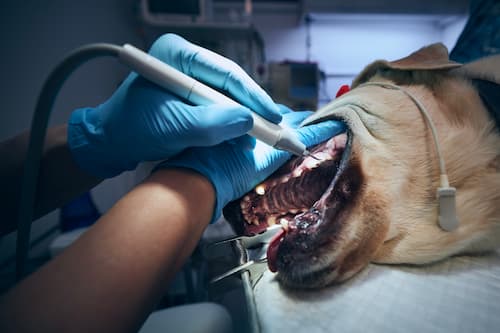Periodontal disease is defined as disease of the structures surrounding and supporting the tooth ie. the gum, the bone of the jaw, and the ligament holding the tooth in the bone.
There are two types of periodontal disease: gingivitis and periodontitis.
Gingivitis – This is inflammation of the gums. This is the earliest stage of periodontal disease and is reversible with treatment.
Clinical features:
- redness
- swelling of the gum
- discharge of pus
- gums bleed easily
Periodontitis – This is inflammation of the gums and surrounding tissue with irreversible loss of bone and connecting ligament.
Clinical features
- all of the signs of gingivitis, as well as:
- bad breath
- Possibly visible pain on eating
- looseness of teeth
- retraction of gums
Untreated periodontal disease causes any or all of the following:
- pain
- tooth loss
- bacteria in the blood stream
- abscess formation
- halitosis (bad breath)
- difficulty in chewing
- bone loss with subsequent fracture of the jaw
Untreated periodontal disease is a major cause of a serious reduction of the quality of life, particularly of older pets, and frequently causes premature death through secondary effects such as kidney failure and heart disease.
Causes
Periodontitis is caused by bacteria living in the mouth. They form plaque, which eventually hardens to become tartar (calculus) and invade the gums and surrounding tissue. Every time an animal with periodontal disease chews on food, some of these bacteria are injected into the bloodstream: from there they end in the heart and kidneys.
Treatment
Our main aim should be prevention through good oral hygiene, such as regular chewing or brushing. However where the disease already exists it is necessary to:
• scale the teeth to remove tartar and plaque
• perform root planing to remove tartar below the gums
• polish the teeth (a smooth surface reduces new plaque formation)
• apply fluoride
• depending on the severity, it may also be necessary to extract teeth that are impossible to save.
Dental procedures
The first step in promoting oral health is to have the plaque and hardened tartar (calculus) removed from your pet’s teeth. This involves scaling and polishing all tooth surfaces with special instruments and dental equipment.
Unfortunately with pets, by the time the teeth are treated it is often too late for some teeth and they need to be extracted due to severe damage or root infection. However, if the right steps in preventative care are followed, in many cases this can be prolonged or avoided.
The second step includes using diet and oral hygiene to control further plaque build-up.
Home Care Maintenance
No matter how well cleaned the mouth is, it must be maintained with proper home care.
- Dental diets such as Royal Canin Dental diet or Hills T/D diet offer a fully balanced prescription diet designed to help keep your pet’s teeth clean.
This can be given alone or in combination with your pet’s normal diet. - Hexarinse, a gel developed to help prevent the buildup of plaque and tartar.
- Brushing your pet’s teeth on a regular basis is only possible with a rare pet.
- Diet: diet is a major factor in the development of plaque and tartar.
- Canned foods often result in food debris remaining on teeth long after the meal is finished.
- Dry dental diet food, dentisticks and rawhides help prevent tartar buildup.
- We like bones but do not recommend bones if your pet does not chew and gnaw on the bones but swallows large pieces.
- A new dental chew called Oravet is having great results.
